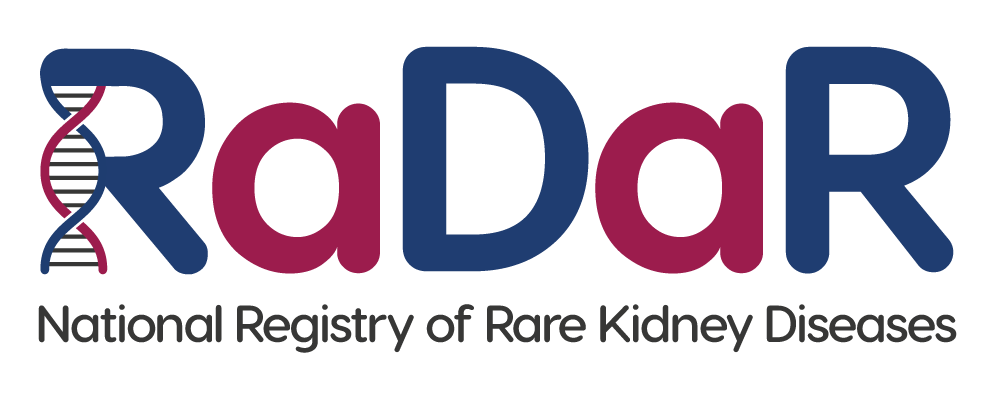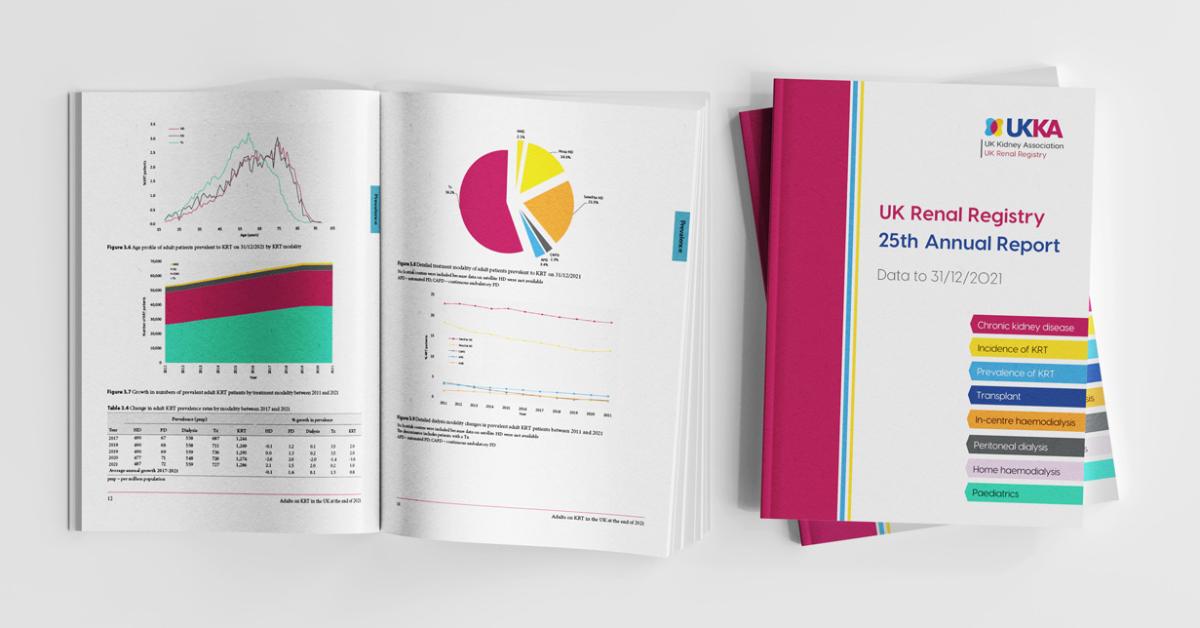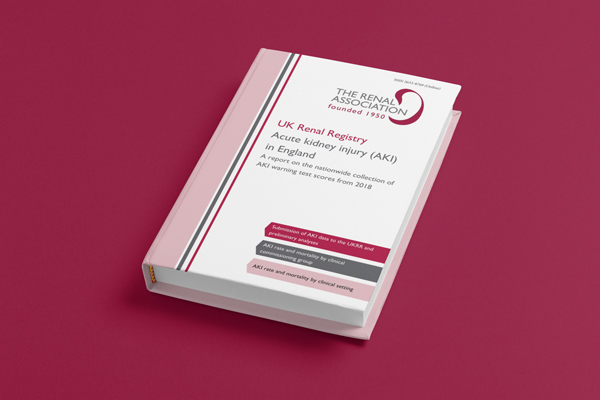Clinician Information
Bartter Syndrome is a rare autosomal recessive renal tubular disorder in which the kidneys cannot properly conserve salt and water, resulting in typical electrolyte abnormalities (hypokalaemic, hypochloraemic metabolic alkalosis). Bartter Syndrome affects salt reabsorption in the thick ascending limb of Henle’s loop, the site of action of loop diuretics. Signs and symptoms are thus comparable to chronic loop diuretic administration.
The information below covers Types 1, 2 and 4 Bartter Syndromes and points out the differences between them. For practical reasons Type 3 Bartter Syndrome and Gitelman Syndrome are dealt with separately.
Age at presentation can vary but in almost all Type 1, 2 and 4 patients, problems are already present antenatally with polyhydramnios and prematurity.
Bartter Syndrome is caused by the malfunction of any of a number of different transporters involved in salt transport in the loop of Henle. Based on the identity of the transporter involved, Bartter Syndrome is classified as follows:
|
Type |
Transporter | Age at presentation |
Associated features |
|
I |
NKCC2 (target of furosemide) | Often antenatally | Nephrocalcinosis |
|
II |
ROMK | Often antenatally |
Nephrocalcinosis |
| III | CLCKNB |
Usually childhood |
Sometimes nephrocalcinosis |
|
IV |
Barttin | Usually antenatally |
Sensorineural deafness |
Rarely, patients with another inherited disorder, autosomal dominant hypocalcaemic hypercalciuria due to mutations in the calcium sensing receptor (CaSR) can also have Bartter-like electrolyte abnormalities. Sometimes this is referred to as Bartter Type 5.
Symptoms:
- Lethargy and floppiness in a baby
- Failure to gain weight
- Vomiting
- Tetany/twitching
- Carpopedal spasm
Signs of:
- Polyuria
- Low blood pressure
- Maternal polyhydramnios/prematurity
Presenting biochemistry:
- Hypokalaemia and alkalosis in Types 1 and 4. (In Type 2 the K may initially be high and only after days to weeks settle to stably low)
- High renin and variable aldosterone
- Hypercalciuria (Types 1 and 2)
Ask about:
- Antenatal history
- Family history including consanguinity
Measure:
BP
- Usually low-normal
Plasma
- Na (usually normal, but can vary depending on feed and hydration status)
- K (low but may start high in Type 2)
- Cl (usually low)
- Ca (usually normal)
- Bicarb (high or high-normal)
- Renin/aldosterone (high/maybe high)
Urine
- Potassium (fractional excretion high)
- Chloride (fractional excretion high)
- Calcium/creatinine ratio (high in Type 1 and 2)
- Magnesium/creatinine ratio (maybe high, especially in type 3)
- Prostaglandins (usually elevated, performed in specialist laboratories, but can be used to support diagnosis and treatment)
Renal ultrasound
- May show nephrocalcinosis
Consider Hearing test
- Sensorineural deafness occurs in Type 4 Bartter Syndrome. The hearing loss cannot be reversed, but cochlear implants may be prescribed, and audiological evaluation and follow-up are important.
Consider genetic testing
- See UKGTN website – Type 3.
Children should be referred to a paediatric nephrology unit.
Treatment typically involves:
1) Salt supplements (KCl and, if needed, Na-salts).
- K supplements: Slow K or KayCeeL liquid preferable to Sando-K, but depends on tolerability and patient age. Titrate to keep K levels towards lower end of normal range if possible (may not be feasible, in which case aim for maximum tolerated doses). See Monitoring below.
NB: ‘Slow-K’ is currently out of production. An equivalent can be obtained by handwriting an FP10 prescription as follows: ‘Slow release KCl 600 mg (unlicensed)’ and the dose and duration required. Pharmacists can obtain the tablets from IDIS. Boots are the best switched-on to this procedure.
2) Dietary modification
- Encourage salty foods. In contrast to usual dietary advice given to patients affected by other kidney disorders, patients with Bartter Syndrome must be actively encouraged to consume salt. Indeed, they typically have a large appetite for salt
- Some patients with Bartter Syndrome may need nutritional supplements to boost caloric intake. With severe failure-to-thrive, tube feeding may be required.
(See Dietary Needs) 3) Prostaglandinsynthesis inhibitor, e.g. indomethacin, ibuprofen or COX2 inhibitor.
These drugs are typically used early on to improve general well-being, electrolyte abnormalities, polyuria and failure-to-thrive. Because of the high risk of GI side effects, they are typically co-administered with a H2 blocker.
Since prostaglandin synthesis inhibitors may cause kidney impairment in the long term, their ongoing need should be regularly reassessed. The dose can often be reduced or even discontinued by school-age.
Guidelines approved by the Renal Association and the Royal College of Anaesthetists for the perioperative management of people with inherited saltwasting alkaloses (Gitelman’s syndrome and Bartter’s syndrome) undergoing non-urgent surgical procedures have now been published can be viewed online here.
Blood tests can help monitor adequacy of treatment. However, it is often difficult to impossible to achieve normalization of biochemistries and probably not necessary. Treatment should be mainly guided by patient symptoms rather than numbers. Giving intermittent large doses of electrolyte supplements is likely to cause large swings in the respective blood levels, which may pose more danger than a steady lower level.
Because of the persistent ongoing urinary losses, blood levels vary with respect to timing of supplementation. Thus the interpretation of blood tests should take timing of last supplementation into account.
It is important to remember that the urinary potassium losses are mediated by aldosterone, in an effort to conserve sodium in exchange for potassium. Thus sodium supplementation may be appropriate and effective to stabilize potassium blood levels.
Intercurrent illnesses usually worsen biochemical abnormalities and may necessitate admission with IV fluid and electrolyte administration. Patients with Bartter Syndrome typically have an associated impairment of the urinary concentrating ability and thus are at increased risk of dehydration, especially with gastrointestinal illnesses and thus may need admission.
NB: Hypokalemia can be treated with aldosterone ‘antagonists’ but this poses serious threats during episodes of dehydration (e.g. vomiting, diarrhea, compromised oral fluid intake), as it can worsen salt and volume losses.




